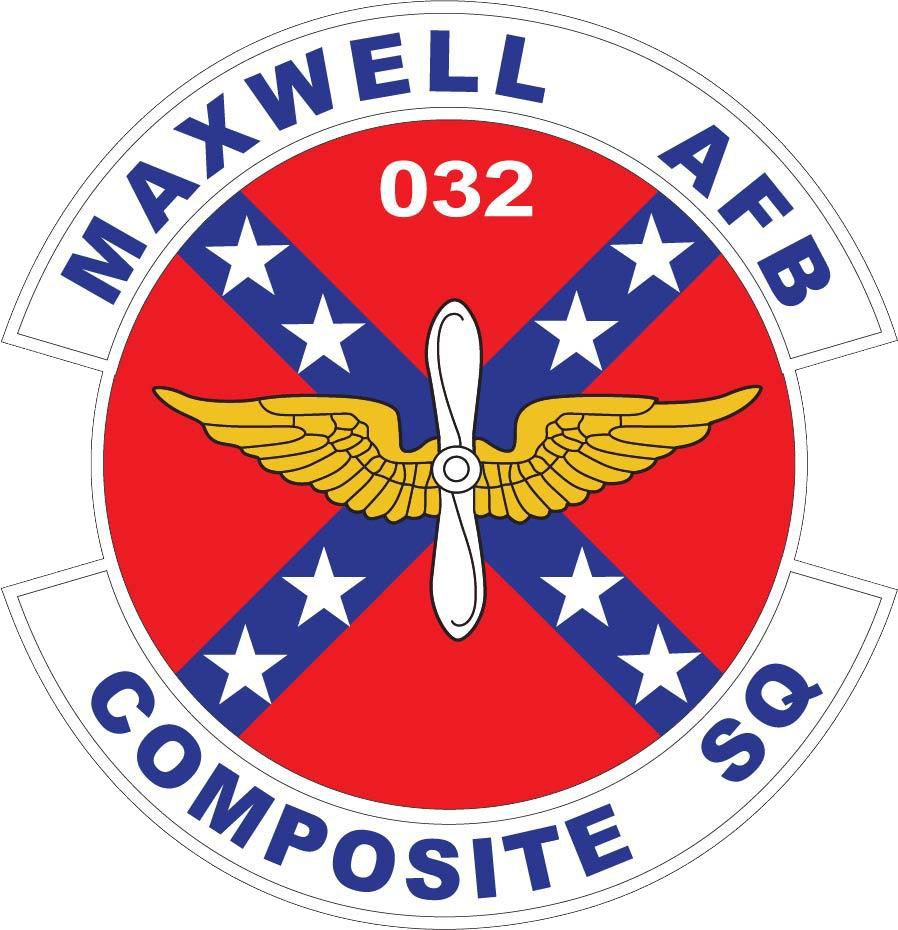

In 2013, four members of the Alabama Wing of the Civil Air Patrol launched a glider program to fly ALWG cadets and train senior members. They had a
very different perspective than typical glider CAP glider programs. Focused on soaring for long flights rather than on quick flights to build CAP mandated minimum sorties, the Alabama Wing Soaring program instantly became a success among ALWG members and garnered national attention. The program led the nation in number of glider flights over the four years it was in operation.
One key reason for its success is the patch being offered for sale. The team created the patch to recognize CAP cadets who completed their five authorized glider orientation rides. No other wing has such an award and achieving the "High Five!" patch (and numbered certificate) quickly became a coveted goal. Too, unlike many other CAP glider programs, demand for glider flights remained high throughout the program's tenure. The program was shut
down--with no reason given other than the ALWG command staff wanted "fresh eyes" on the program. The level of success exemplified by this patch
will likely never be achieved again as CAP glider programs continue to struggle to be relevant and to attract interest--which is exactly what Alabama
Wing Soaring accomplished over its short life.
This patch will never be awarded again. It was authorized for uniform wear by the ALWG Commander who authorized the original team to establish the program and only by ALWG members. Twenty-one cadets are "High Five!" recipients. They, and the patch they proudly wear, are the legacy of one of the greatest and most successful programs in Civil Air Patrol history: Over 1,000 glider orientation and training flights resulting in solos and glider pilot licenses for both cadet and senior members. Unfortunately, the program also represents a sad instance of Civil Air Patrol wing management that placed protecting individual administration power over program success.
Information provided by:
James M. Locke
July 13, 2018

EMBLEM Blazon. On a disk Gules, bearing a saltire Azure charged with eight mullets Argent (White) and overall a two-bladed propeller surrounded by a pair of outstretched wings Or; in chief "032" Argent (White); all within a narrow border Argent (White). Attached above the disk, a White scroll edged with a narrow White border and inscribed "MAXWELL AFB" in Ultramarine Blue letters. Attached below the disk, a White scroll edged with a narrow White border and inscribed "COMPOSITE SQ" in Ultramarine Blue letters.
Blazon. On a disk Gules, bearing a saltire Azure charged with eight mullets Argent (White) and overall a two-bladed propeller surrounded by a pair of outstretched wings Or; in chief "032" Argent (White); all within a narrow border Argent (White). Attached above the disk, a White scroll edged with a narrow White border and inscribed "MAXWELL AFB" in Ultramarine Blue letters. Attached below the disk, a White scroll edged with a narrow White border and inscribed "COMPOSITE SQ" in Ultramarine Blue letters.
Significance. Ultramarine Blue and Air Force Yellow are the Air Force colors. Blue alludes to the sky, the primary theater of Air Force operations. Yellow refers to the sun and the excellence required of all Airmen. The propeller between two gold wings refers to the Army Aviation branch insignia and symbolizes the connection between Maxwell Field, now Maxwell Air Force Base, and CAP’s Montgomery Squadron 461-6 which was established in 1942. Maxwell AFB Composite Squadron traces its lineage to Squadron 461-6. The Confederate Flag "Stars and Bars'' in the background represents the squadron’s home in Alabama, which is nicknamed the Heart of Dixie.
COLORS OF EMBLEM
Ultramarine Blue: Cable # 67118, PMS Reflex
Air Force Yellow: Cable # 67103, PMS 116
Scarlet: Cable # 65006, PMS 200
White: Cable # 67101, PMS None
Information provided by:
Capt George A Yarchak, Commander, Maxwell AFB Comp Sq
October 9, 2022

The patch is a triangular shape depicting an aircraft flying over Cheaha Mountain. Mount Cheaha is the tallest mountain in Alabama and is located near Anniston, AL. Mount Cheaha also is a known area of concern for aircraft accidents. Al-116 was located at Anniston for quite some time hence the Anniston Squadron 118 designation at the bottom of the patch. I have heard but I do not know for sure that a lot of people thought it looked as if the airplane on the patch was about to hit Mount Cheaha.
Information provided by:
Captain Cindy Bennett, Commander, Pell City Comp Sq 118
July 5, 2010

The patch is the shield type design. The Alabama state flag is in the background with a CAP airplane flying over Logan Martin Lake. Logan Martin Lake is near Pell City, Alabama and AL-118 is now located in Pell City. I do not know The circumstances of the move from Anniston to Pell City. Cadet Morgan Bennett of the Pell City Squadron designed the shield shaped patch in Fall 2007-Spring 2008 and it was approved by wing. Cadet Bennett received her Spaatz Award in June 2008.
Information provided by:
Captain Cindy Bennett, Commander, Pell City Comp Sq 118
July 5, 2010